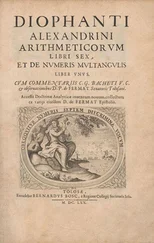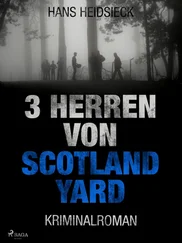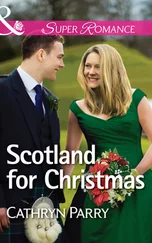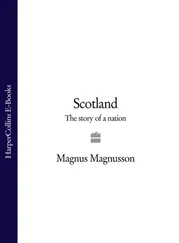EDITORS
SARAH A. CORBET, ScD
PROF. RICHARD WEST, ScD, FRS, FGS
DAVID STREETER, MBE, FIBiol
JIM FLEGG, OBE, FIHort
PROF. JONATHAN SILVERTOWN
*
The aim of this series is to interest the general
reader in the wildlife of Britain by recapturing
the enquiring spirit of the old naturalists.
The editors believe that the natural pride of
the British public in the native flora and fauna,
to which must be added concern for their
conservation, is best fostered by maintaining
a high standard of accuracy combined with
clarity of exposition in presenting the results
of modern scientific research.
THE NEW NATURALIST LIBRARY
SCOTLAND
Looking at the Natural Landscapes
PETER FRIEND
with
LEAH JACKSON-BLAKE
and
JAMES SAMPLE
Contents
Cover
Title Page THE NEW NATURALIST LIBRARY SCOTLAND Looking at the Natural Landscapes PETER FRIEND with LEAH JACKSON-BLAKE and JAMES SAMPLE
Editors’ Preface
Authors’ Foreword and Acknowledgements
CHAPTER 1 - Looking at Scotland’s Landscapes
CHAPTER 2 - Surface Modifications
CHAPTER 3 - Movements of the Earth from Within
CHAPTER 4 - Episodes in the Bedrock History of Scotland
CHAPTER 5 - Later Surface Modifications
CHAPTER 6 - Area 1: Galloway
CHAPTER 7 - Area 2: Southern Borders
CHAPTER 8 - Area 3: Jura to Arran
CHAPTER 9 - Area 4: Glasgow
CHAPTER 10 - Area 5: Edinburgh
CHAPTER 11 - Area 6: Mull
CHAPTER 12 - Area 7: Rannoch
CHAPTER 13 - Area 8: Dundee
CHAPTER 14 - Area 9: Uists and Barra
CHAPTER 15 - Area 10: Skye
CHAPTER 16 - Area 11: Affric
CHAPTER 17 - Area 12: Cairngorm
CHAPTER 18 - Area 13: Aberdeen
CHAPTER 19 - Area 14: Lewis and Harris
CHAPTER 20 - Area 15: Cape Wrath
CHAPTER 21 - Area 16: Inverness
CHAPTER 22 - Area 17: Caithness
CHAPTER 23 - Area 18: Orkney
CHAPTER 24 - Area 19: Shetland
CHAPTER 25 - Overview
Further Reading
List of Searchable Terms
The New Naturalist Library
Copyright
About the Publisher Конец ознакомительного фрагмента. Текст предоставлен ООО «ЛитРес». Прочитайте эту книгу целиком, купив полную легальную версию на ЛитРес. Безопасно оплатить книгу можно банковской картой Visa, MasterCard, Maestro, со счета мобильного телефона, с платежного терминала, в салоне МТС или Связной, через PayPal, WebMoney, Яндекс.Деньги, QIWI Кошелек, бонусными картами или другим удобным Вам способом.
Editors’ Preface
IN HIS EARLIER NEW NATURALIST VOLUME on the natural landscapes of Southern England, the author, Peter Friend, presented a new vision of landscape, providing a geological background for our understanding of the distribution and variation of flora and fauna in the lowland parts of Britain.
A division of Britain into lowland and highland regions has often been made in descriptions of our flora and fauna, for example by Arthur Tansley in his classic book on Types of British Vegetation (1911). Now Peter Friend has turned his attention to Scotland, the major highland part of Britain. In contrast to the sedimentary origin of the ‘soft’ rocks of the lowlands, the ‘hard’ rocks of Scotland arise from a series of events in the Earth’s crust dating back to the earliest years of the planet, which were far less understood in the days when Dudley Stamp’s New Naturalist volume on Britain’s Structure and Scenery was published in 1946. The resulting structures, now much better understood, underlie Scotland’s great variations in rock type and altitudes. Allied to this is the effect of the northern climate on the distribution of plants and animals, making the Highlands an area of particular interest from the biogeographical point of view, a mountainous region in the far west of Europe, adjacent to the Atlantic.
The illustrations featured in this book take full account of the possibilities of aerial and satellite photography in analysing topography, showing the relation between the geology, the soils, and the directions and angles of sloping features – all factors which must affect flora and fauna. The arrangement into areas, each with a similar treatment and analysis of the landscape, makes the subject very accessible to those interested in the geology or visiting the areas, and to those studying the fauna and flora and wishing to understand the physical background of the natural history. This book is a welcome addition to the New Naturalist Library, and will strengthen our understanding of the important and basic relationships between geology and natural history.
Authors’ Foreword and Acknowledgements
THE PLEASURE OF ENJOYING A LANDSCAPE is greatly increased and deepened by developing some feeling for the events in the history of the Earth that may have caused it. This approach was followed in 2008, when Southern England, by Peter Friend, appeared as New Naturalist 108. The object was to provide a systematic general review of the landscapes visible in the countryside extending from Land’s End in the southwest to East Anglia in the east. Peter has now been joined by two others, Leah Jackson-Blake and James Sample, to apply a similar approach to Scotland.
Peter and his two brothers were brought up in Edinburgh, in the Midland Valley of Scotland, moving with the family for a few years to Peebles in the Southern Uplands, during part of the Second World War. Many of the family activities involved visits to the countryside, and the pleasures and interests of these visits have continued into new generations of the family. The other two authors of this book have recently moved from southern England, where the book has been written, and now enjoy the landscapes of northern Scotland where they live and work.
Landscapes are easy to look at, given reasonable weather conditions, but difficult to describe in words. But developments in computer technology now offer many ways of analysing landscapes using different mapping methods, and these, along with diagrams and photos, form the framework of this book. Working on this imagery has been the main contribution of a succession of enthusiastic helpers. Lucinda Edes, Emilie Galley and Liesbeth Renders, and the second and third authors of this book, have all contributed great skill and enthusiastic innovation to this work, and made the project enjoyable as well as successful.
The home of this project has been the Department of Earth Sciences in the University of Cambridge. Peter Friend walked into the department as a first-year student some 57 years ago, to meet his supervisor, W. Brian Harland, for the first time. Apart from a period in the Scott Polar Research Institute, he has been based in Cambridge Department of Earth Sciences ever since, teaching and exploring the scenery and geology of many parts of the world. This work has included many visits to Spitsbergen (under the guidance of W. Brian Harland), Greenland, Spain, the Arabian Gulf, India and Pakistan. This has been an exciting period to be working in geology in Cambridge, because many key advances in the subject have been made by people working in Cambridge. CASP, originally the Cambridge Arctic Shelf Programme, made a valuable donation in support of the aerial photography used in this book.
All three authors would like to acknowledge their debts to the Cambridge college system. In the case of Peter Friend, his college, Darwin, has provided him with the congenial friendship of many people from diverse backgrounds, and their skills have helped him to remain a generalist in his interests.
Читать дальше












